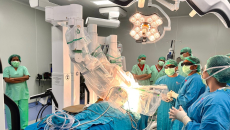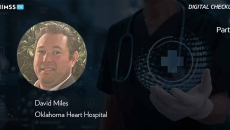Electronic Health Records (EHR, EMR)
Also, New South Wales has introduced a new virtual urgent care service for adults.
Also, the South Korean government will pilot an electronic system to maintain the patient medical records at shuttered health facilities.
Atrium Health's use of Nuance’s artificial intelligence-driven documentation software did not make clinicians as a group more efficient, according to researchers.
The hospital is the first in Indonesia to adopt an automated EWS system.
Eric Jimenez of New Mexico's Artesia General Hospital also discusses the value of optimizing current systems over rip and replace and facilitating social determinants of health data capture.
The Health Care Cybersecurity and Resiliency Act of 2024 would provide grants to help healthcare organizations strengthen prevention and response - and push for better coordination between HHS and CISA.
TrialGPT could help providers navigate the vast and ever-changing range of clinical trials available to their patients by finding, ranking and explaining why a patient is matched, the agency says.
A pilot validation study found that the AI helped hasten case reviews and data analysis and determine the necessity of antibiotic use.
Public health services in South Australia and Melbourne are set to implement a digital patient flow management platform.
Changing EHRs is a dreaded task for IT leaders and workers, and for clinicians used to the previous system. Oklahoma Heart Hospital CIO David Miles and his team did it – and offer guidance to peers facing the same challenge.






